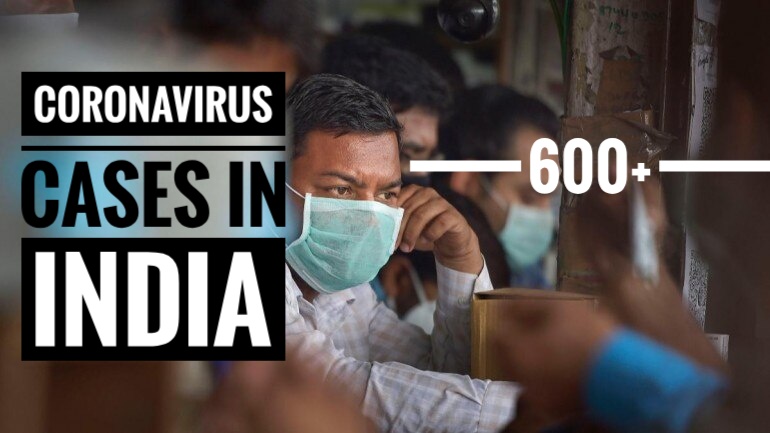Union Finance Minister Nirmala Sitharaman on Wednesday announced a ₹3 lakh crore collateral-free loan scheme for businesses, especially micro, small and medium enterprises (MSMEs), as part of a ₹20-lakh-crore economic stimulus package to deal with the COVID-19 pandemic. The announcement of the package was given earlier by the Prime Minister regarding the economic package.
Interactive map of confirmed coronavirus cases in India | State-wise tracker for coronavirus cases, deaths and testing rates. For salaried workers and taxpayers, some relief was provided in the form of an extended deadline for income tax returns for the financial year 2019-20, with the due date now pushed to November 30, 2020. The rates of tax deduction at source (TDS) and tax collection at source (TCS) have been cut by 25% for the next year, while statutory provident fund (PF) payments have been reduced from 12% to 10% for both employers and employees for the next three months.
“NBFCs”
Apart from MSMEs, other stressed business sectors that got attention were non-banking finance companies (NBFCs), power distribution companies, contractors, and the real estate industry.
This is the first tranche of the Atmanirbhar Bharat Abhiyan announced by Prime Minister Narendra Modi on Tuesday as a ₹20 lakh crore economic package. That package includes the ongoing Pradhan Mantri Garib Kalyan Yojana, meant to support the poorest and most vulnerable communities during the pandemic, as well as several measures taken by the Reserve Bank of India to improve liquidity. More tranches are expected in the next few days.
Ms Sitharaman side-stepped queries on the actual cash outgo for the government, as well as how the Centre intends to raise the needed funds. Ernst and Young’s chief policy advisor D.K. Srivastava estimated that the measures announced on Wednesday amounted to ₹5.94 lakh crore, which includes both liquidity financing measures and credit guarantees, although the direct fiscal cost to the government in the current financial year may only be ₹16,500 crores.
MSMEs will get the bulk of the funding. The ₹3 lakh crore emergency credit line will ensure that 45 lakh units will have access to working capital to resume business activity and safeguard jobs, Ms Sitharaman said. For two lakh MSMEs that are stressed or considered non-performing assets, the Centre will facilitate the provision of ₹20,000 crores as subordinate debt. A ₹50,000 crore equity infusion is also planned, through an MSME fund of funds with a corpus of ₹10,000 crores.
The definition of an MSME is being expanded to allow for higher investment limits and the introduction of turnover-based criteria. In a bid to fulfil the Prime Minister’s vision of a self-reliant or “atmanirbhar” India, global tenders will not be allowed for government procurement up to ₹200 crore NBFCs, housing finance companies, and microfinance institutions — many of which serve the MSME sector — will be supported through a ₹30,000 crore investment scheme fully guaranteed by the Centre, and an expanded partial credit guarantee scheme worth ₹45,000 crores, of which the first 20% of losses will be borne by the Centre.
Power distribution companies, which are facing an unprecedented cash flow crisis, will receive a ₹90,000 crore liquidity injection. Contractors will get a six-month extension from all Central agencies and also get partial bank guarantees to ease their cash flows. Registered real estate projects will get a six-month extension, with COVID-19 to be treated as a “force majeure” event.
“Supply side measures”
“A clear feature of today’s announcement is that most of these are basically supply-side measures, aimed at activating businesses in the MSME, real estate, NBFC sectors,” said Dr Srivastava, who is also a member of the Advisory Council to the 15th Finance Commission. “Generally, stimulus measures are aimed at boosting demand either by government spending on its own account or increasing disposable
incomes of households through cash transfers or tax concessions.” However, he noted that both demand and supply are in need of revival in the Indian economy today.

“Survival package”
“What was announced today is not a stimulus package. It is in effect a survival package so that MSMEs can survive the lockdown and restart production,” said fellow economist and former Chief Statistician of India Pronab Sen, welcoming the measures but adding that a further stimulus may be needed after the lockdown is lifted.
He expressed concern that risk-averse bankers may not extend the loan benefits to all MSMEs despite the government’s 100% credit guarantee. “Some pick and choose are going to happen now, and some of those who need it and deserve may not get it. It
would have been better if the government had made it mandatory across the board,” he said.
“EPF support”
Employee Provident Fund (EPF) support, provided to low-income organized workers in small units under the PMGKY is being extended for another three months and is expected to provide liquidity relief of ₹2,500 crores. Mandatory EPF contributions are also being reduced from 12% to 10% for both employees and employers in all other establishments.
This is a welcome move which will increase liquidity for both distressed businesses and cash-starved workers, said K.R. Shyam Sundar, industrial relations professor at XLRI, Jamshedpur. However, he warned that this immediate injection of liquidity is “low-hanging fruit for the government” and would come at the cost of workers savings.
“In reality, the costs of the COVID-19 crisis management in a basic sense is shifted on to the vast majority of workers who are not covered by the EPF subvention scheme, thanks to its narrow coverage,” he said.

